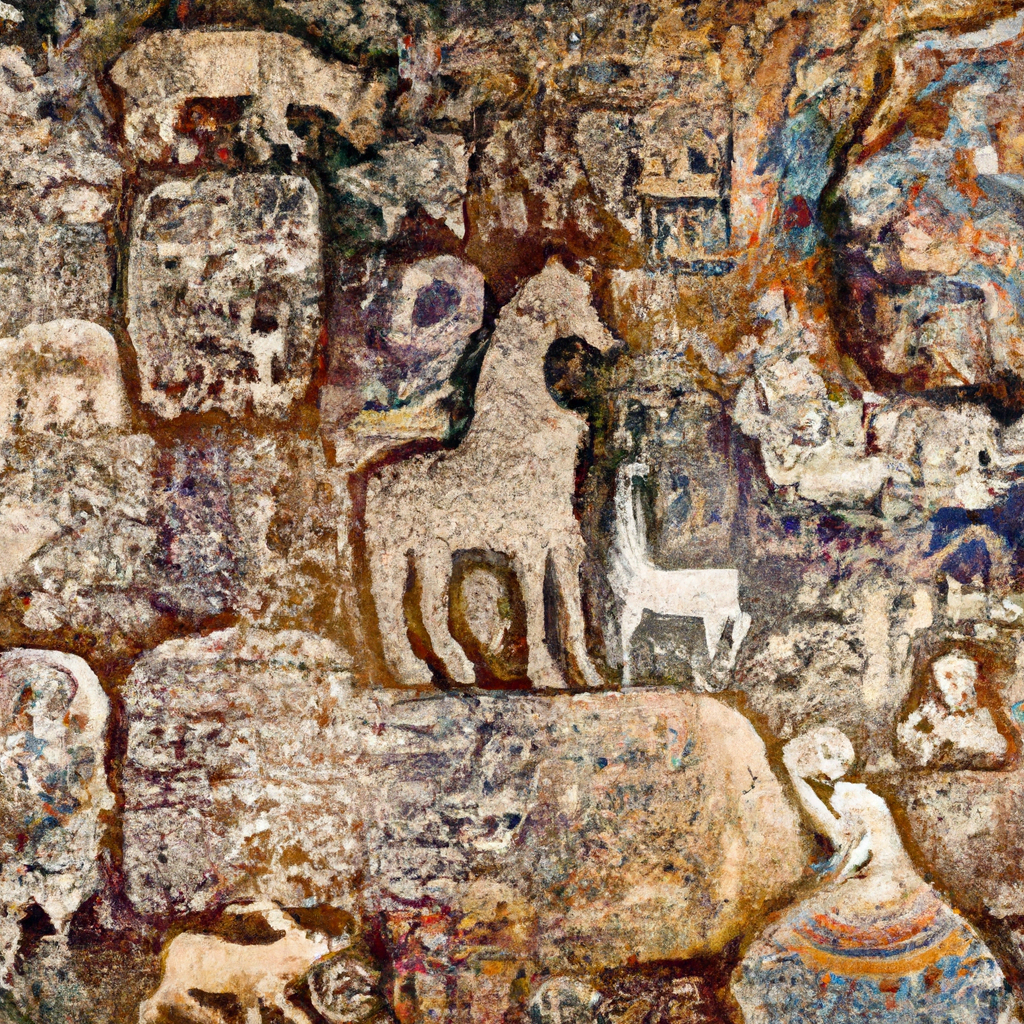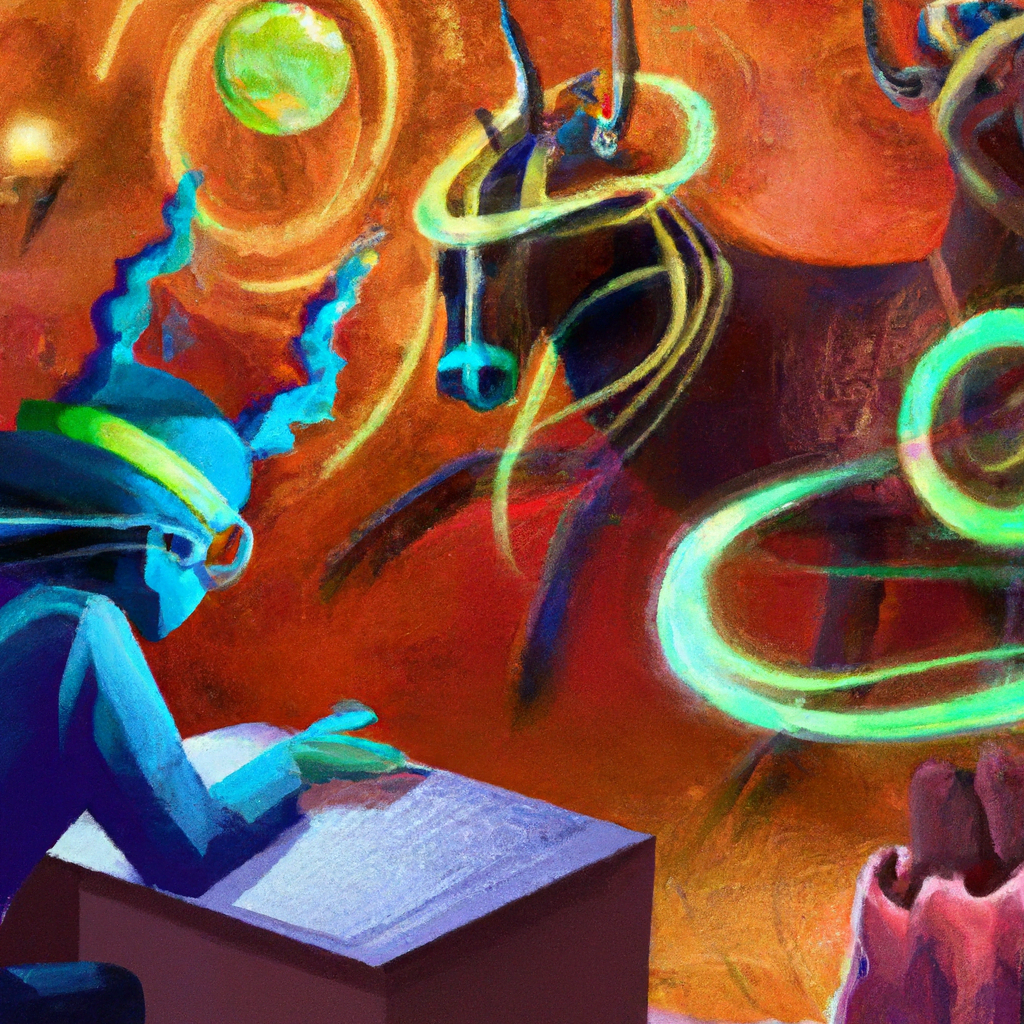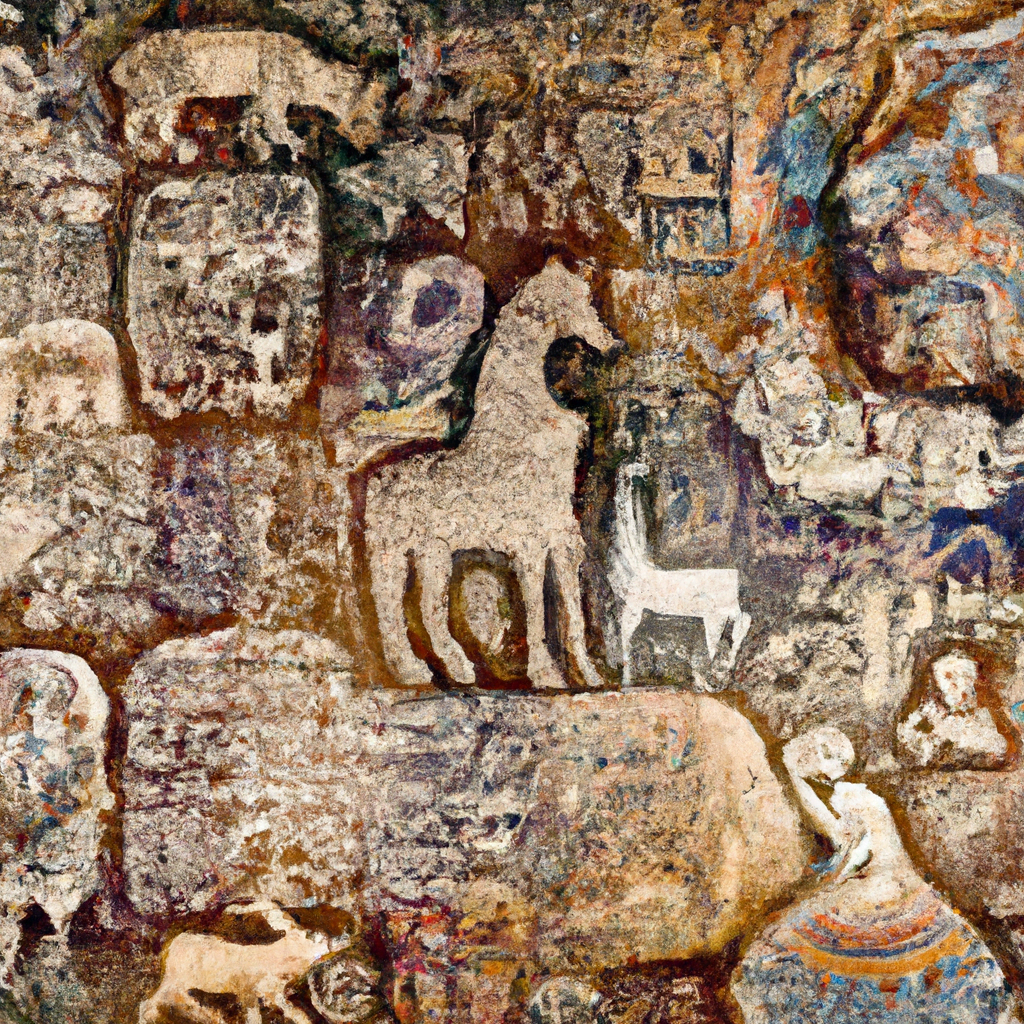Are you fascinated by the power of illustrations to bring stories and ideas to life? Drawing for illustration is a specialized field that goes beyond basic sketching, focusing on techniques, tools, and principles that help artists create detailed and meaningful illustrations. Whether you’re interested in editorial, fashion, fantasy, or children’s book illustrations, this niche explores the nuances of light and shadow, the importance of anatomy, and the role of color theory in creating mood and emotion. It’s not just about creating pretty pictures; it’s about conveying messages, emotions, and stories through visual art. From cave paintings to digital art, the history of illustration is a journey through time, cultural contexts, and evolving trends in the world of art and design. Join us as we delve into the fascinating history of illustration and its transition from traditional mediums to digital platforms.

Prehistoric Illustration
In the earliest days of human existence, when written language did not yet exist, people relied on visual communication to convey their ideas, stories, and experiences. This is where prehistoric illustration comes in. Cave paintings, dating back thousands of years, provide us with a glimpse into the artistic expressions of our ancestors. These drawings, created using natural pigments and simple tools, depict various scenes from everyday life, including hunting, dancing, and religious rituals. Although we can only speculate about the specific meanings behind these illustrations, they serve as a testament to the human desire to communicate visually.
Ancient Illustration
Egyptian Illustration
One of the most iconic ancient civilizations, Egypt, left behind a rich legacy of illustration. The Egyptians used illustration extensively in their tombs and temples to depict scenes from mythology, religious rituals, and daily life. The highly stylized and symbolic nature of Egyptian art is evident in their illustrations, which often featured vivid colors and intricate detailing. Egyptian artists aimed to convey not only the physical appearance of their subjects but also their symbolic and spiritual significance.
Greek and Roman Illustration
The ancient Greeks and Romans also made significant contributions to the world of illustration. Greek pottery, for example, was adorned with detailed illustrations that depicted scenes from mythology, historical events, and everyday life. These illustrations not only served as decorative elements but also as a means of storytelling and cultural expression. Roman illustration, on the other hand, focused more on narrative and storytelling through the use of frescoes and mosaics. These artworks depicted a wide range of subjects, including mythological tales, historical events, and portraits of notable individuals.
Medieval Illustration
The Middle Ages, often referred to as the medieval period, witnessed the emergence of a unique style of illustration that was characterized by its ornate details and religious themes. Two notable forms of medieval illustration are illuminated manuscripts and Persian miniatures.
Illuminated Manuscripts
Illuminated manuscripts were intricately decorated books that often contained religious texts. These manuscripts were adorned with elaborate illustrations, intricate borders, and gold leaf to enhance their aesthetic appeal. Monks and scribes painstakingly created these illustrations by hand, using various techniques such as calligraphy, miniature painting, and decorative embellishments. The illustrations in illuminated manuscripts served both a decorative and functional purpose, helping readers visualize the stories and teachings contained within the texts.
Persian Miniatures
Persian miniatures, also known as Iranian miniatures, were intricately detailed small-scale paintings that flourished in the Persian Empire during the Middle Ages. These illustrations often depicted scenes from Persian mythology, epic poems, and historical events. The artists behind these miniatures employed vibrant colors, intricate brushwork, and meticulous detailing to bring their subjects to life. Persian miniatures not only showcased the artistic skills of their creators but also served as a medium for storytelling and cultural preservation.
Chinese and Japanese Scrolls
In East Asia, illustration thrived in the form of scrolls. Chinese and Japanese artists used long scrolls of rice paper to create detailed narrative illustrations. Chinese scroll paintings, known as “hand scrolls,” depicted scenes from nature, landscapes, historical events, and religious stories. These illustrations were often unrolled gradually, allowing viewers to immerse themselves in the unfolding story. Japanese scroll paintings, or “emakimono,” were similar in style and function but had distinct characteristics, such as the use of ink washes and the integration of calligraphy. Both Chinese and Japanese scrolls were highly regarded as valuable works of art and as a means of preserving cultural heritage.

Renaissance Illustration
The Renaissance, a period of cultural and artistic rebirth in Europe, brought about significant advancements in various fields, including illustration. During this time, artists such as Leonardo da Vinci, Michelangelo, and Raphael revolutionized the art of illustration with their mastery of form, anatomy, and perspective. The Renaissance can be divided into two distinct periods: early Renaissance and high Renaissance.
Early Renaissance
During the early Renaissance, artists focused on rediscovering the techniques and aesthetics of classical antiquity. Illustrations from this period often depicted religious subjects, such as biblical scenes and saints. Artists aimed to portray the human figure in a more naturalistic and anatomically correct manner, paying attention to proportion, balance, and perspective. The use of chiaroscuro, a technique that emphasizes the contrast between light and shadow, was also popular during this time, adding depth and dimension to the illustrations.
High Renaissance
The high Renaissance marked a culmination of the artistic achievements of the era. It was characterized by a heightened emphasis on technical skill, harmony, and balance. Illustrations from this period often featured grand compositions, idealized figures, and a harmonious arrangement of colors. Artists like Leonardo da Vinci and Raphael became masters of these principles, producing iconic illustrations that continue to inspire artists to this day. The high Renaissance also saw the rise of printmaking as a popular medium for reproducing and disseminating illustrations to a wider audience.
Enlightenment Illustration
The Enlightenment, also known as the Age of Reason, was a period of intellectual and cultural awakening that emerged during the 18th century. It was a time of scientific, political, and philosophical revolutions, which greatly influenced the world of illustration. Two significant forms of illustration that emerged during this period were printmaking and scientific illustration.
Printmaking
Printmaking revolutionized the world of illustration by allowing artists to reproduce their work more efficiently and distribute it on a larger scale. Techniques such as woodcut, etching, and lithography enabled artists to create multiple copies of their illustrations, making them more accessible to the general public. Printmaking also gave rise to new genres of illustration, such as satirical prints and political cartoons, which served as powerful tools for social commentary and criticism.
Scientific Illustration
The Enlightenment was also a time of great scientific discovery and exploration. As scientists made groundbreaking discoveries in various fields, the need for accurate visual representations of their findings became crucial. Scientific illustration emerged as a means of documenting and communicating scientific knowledge. Artists worked closely with scientists to create detailed illustrations of specimens, anatomical studies, and natural phenomena. These illustrations played a vital role in disseminating scientific knowledge and shaping our understanding of the natural world.
19th Century Illustration
The 19th century witnessed a significant evolution in illustration, fueled by technological advancements and changing societal trends. This period saw the emergence of two prominent styles of illustration: the Golden Age of Illustration and Victorian illustration.
Golden Age of Illustration
The Golden Age of Illustration spanned roughly from the late 19th century to the early 20th century. Illustration during this era was characterized by its highly detailed and realistic style, often inspired by the works of the Old Masters. Artists such as Arthur Rackham, Edmund Dulac, and Howard Pyle created stunning illustrations for fairy tales, children’s books, and literary classics. The illustrations from this period captivated audiences with their intricate details, vibrant colors, and imaginative compositions.
Victorian Illustration
Victorian illustration, as the name suggests, emerged during the Victorian era, a period that spanned from the mid-19th century to the early 20th century. Illustrators of this time captured the spirit and aesthetics of the Victorian era, characterized by its emphasis on morality, propriety, and sentimentality. Victorian illustrations often featured romanticized depictions of idealized domestic life, as well as scenes from literature and social commentary. Artists like Dante Gabriel Rossetti, John Tenniel, and Kate Greenaway became synonymous with Victorian illustration, leaving a lasting impact on the field.
20th Century Illustration
The 20th century brought about tremendous advancements in art and design, ushering in new styles and movements that influenced the world of illustration. Three significant styles that emerged during this period were Art Nouveau, Art Deco, and Modern illustration.
Art Nouveau
Art Nouveau, a decorative art movement that originated in the late 19th century and flourished in the early 20th century, had a profound impact on illustration. This style was characterized by its intricate organic forms, flowing lines, and emphasis on decorative elements. Illustrations in the Art Nouveau style often featured stylized flowers, graceful figures, and elaborate typography. Artists like Alphonse Mucha and Aubrey Beardsley were instrumental in popularizing this style, which found expression in various forms of illustration, including posters, book covers, and decorative prints.
Art Deco
Art Deco, which emerged in the 1920s and 1930s, was a sleek and glamorous style that represented the changing spirit of the modern era. Illustrations of this period embraced geometric shapes, bold colors, and streamlined forms. Art Deco illustration was often associated with the world of advertising, capturing the attention of consumers with its vibrant and eye-catching designs. Artists such as Tamara de Lempicka and Erté played a significant role in defining and popularizing this style.
Modern Illustration
The latter half of the 20th century witnessed the rise of various styles in illustration, reflecting the dynamic and eclectic nature of the era. Illustrators began experimenting with new techniques, mediums, and styles, exploring different ways of expression. The field of modern illustration encompasses a wide range of styles, including realism, surrealism, abstract art, and pop art, among others. Illustrators such as Norman Rockwell, Salvador Dalí, and Andy Warhol pushed the boundaries of traditional illustration, inspiring future generations of artists to explore their own unique styles and visions.
Contemporary Illustration
In the digital age, illustration has continued to evolve and adapt, embracing new technologies and mediums. Contemporary illustration encompasses a vast array of styles and techniques, reflecting the diverse interests and influences of today’s artists. Two prominent forms of contemporary illustration are digital illustration and mixed media illustration.
Digital Illustration
With the advent of computers and digital art software, illustrators gained a whole new set of tools and techniques to explore. Digital illustration allows artists to create highly detailed and vibrant illustrations using digital drawing tablets, software programs, and various digital brushes and effects. It offers a level of flexibility, experimentation, and efficiency that traditional mediums may not provide. Digital illustration finds its applications in a wide range of fields, including advertising, graphic design, animation, and concept art.
Mixed Media Illustration
Mixed media illustration combines traditional and digital techniques, embracing both the tactile qualities of traditional art forms and the versatility of digital tools. Artists may create their illustrations using a combination of mediums, such as paint, pen and ink, collage, and photography, and then digitally enhance and manipulate the artwork using various software programs. Mixed media illustration allows artists to create unique and visually compelling illustrations that push the boundaries of traditional illustration.
Illustration Styles
Illustration encompasses a diverse range of styles, each with its own unique characteristics and applications. Some of the most prominent styles include editorial illustration, fashion illustration, fantasy illustration, and children’s book illustration.
Editorial Illustration
Editorial illustration refers to illustrations created for newspapers, magazines, and online publications to accompany articles, opinion pieces, and editorial content. It serves as a visual representation of the text, helping to clarify and enhance the message being conveyed. Editorial illustrations can take many forms and styles, depending on the tone and subject matter of the article. They can be realistic, abstract, humorous, or thought-provoking, but the ultimate goal is to engage the reader and provide visual context to the written content.
Fashion Illustration
Fashion illustration focuses on depicting clothing, accessories, and models in a visually engaging and appealing manner. Fashion illustrators often work closely with designers and fashion houses to create illustrations that showcase their latest collections or capture the essence of a particular brand. Fashion illustration can range from loose and gestural sketches to highly detailed and polished renderings, depending on the artist’s style and intentions. It plays a crucial role in the fashion industry, helping to communicate the aesthetics, mood, and concept behind a collection.
Fantasy Illustration
Fantasy illustration transports viewers to imaginary worlds and realms, filled with mythical creatures, epic landscapes, and heroic characters. It often draws inspiration from folklore, mythology, and works of fiction. Fantasy illustrators use their imagination and artistic skills to create fantastical and otherworldly illustrations that ignite the viewer’s sense of wonder and imagination. This style of illustration finds its applications in various forms of media, including books, video games, and movies.
Children’s Book Illustration
Children’s book illustration plays a vital role in capturing the imaginations of young readers and bringing stories to life. Children’s book illustrators work closely with authors and publishers to visually interpret the written text, creating illustrations that are engaging, relatable, and age-appropriate. They incorporate elements of storytelling, character design, and visual narrative to create illustrations that resonate with young readers. Children’s book illustration can vary in style, from simple and playful to richly detailed and imaginative, depending on the target audience and the storyline.
Transition to Digital Art
As technology continues to advance, the world of illustration has experienced a significant shift from traditional drawing methods to digital platforms. This transition has brought about numerous advantages and challenges for illustrators.
Advantages of Digital Illustration
Digital illustration offers a wide range of advantages that have revolutionized the field. One of the key advantages is the ability to make non-destructive edits and modifications. Unlike traditional mediums, where mistakes are difficult to rectify, digital art allows artists to experiment, iterate, and refine their work with ease. Digital illustration also offers a vast array of tools, brushes, and effects that can enhance the artistic process and create stunning visual effects. Additionally, digital art can be easily shared, reproduced, and distributed across various platforms and mediums, making it accessible to a broader audience.
Challenges of Digital Illustration
While digital illustration presents numerous advantages, it also comes with its own set of challenges. One such challenge is the learning curve associated with mastering digital art software and tools. Artists need to invest time and effort into familiarizing themselves with the software’s interface, functions, and capabilities. Additionally, creating artwork digitally requires a different set of skills and techniques compared to traditional drawing methods. Artists must adapt their artistic process and workflow to suit the digital medium. Another challenge is the potential loss of the tactile and organic qualities of traditional art. Some artists may find it challenging to replicate the textures and physicality of traditional mediums digitally. However, with practice and experimentation, artists can overcome these challenges and harness the full potential of digital illustration.
In conclusion, the history of illustration spans thousands of years and encompasses a vast array of styles, techniques, and mediums. From the prehistoric cave paintings to the digital illustrations of today, artists have continually pushed the boundaries of creativity and visual storytelling. Illustration has evolved alongside societal and technological advancements, reflecting the changing aesthetics, trends, and cultural influences of each era. Whether through ancient Egyptian hieroglyphics, medieval illuminated manuscripts, or contemporary digital illustrations, the art of illustration remains a powerful medium for conveying stories, ideas, and emotions. As the world continues to evolve, so too will the field of illustration, adapting to new technologies and embracing new forms of expression.

